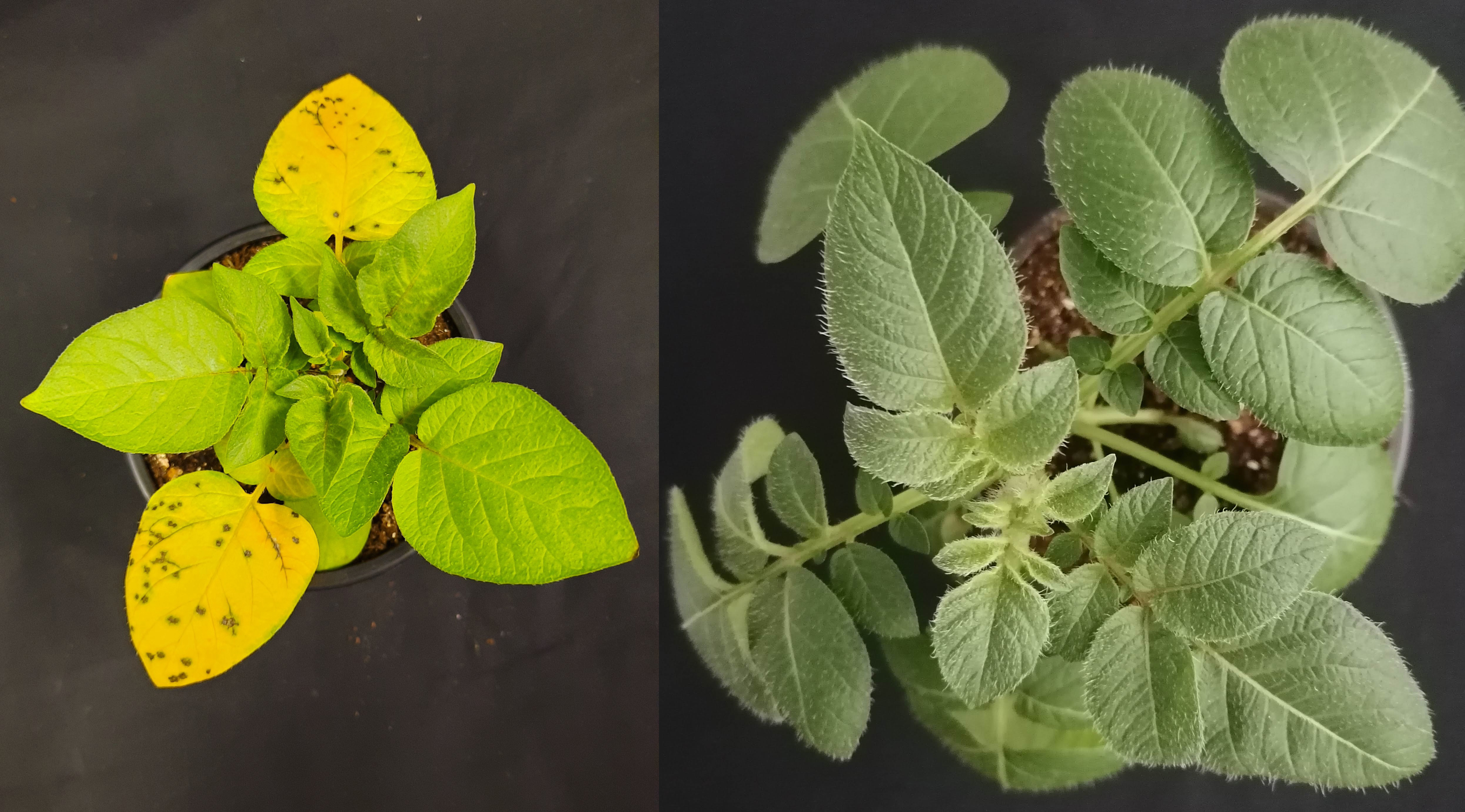
International Team Develops Model to Analyze Potato's Growth-Defense Trade-off
August 13, 2025| |
Scientists from the Universities of Potsdam and Erlangen, Max Planck Institute of Molecular Plant Physiology, and the National Institute of Biology, Ljubljana, have created potato-GEM, the first large-scale metabolic model of the potato genome. This model provides a comprehensive look at the potato's metabolism, particularly its secondary metabolism, which involves the creation of defense compounds.
The potato is one of the most important crops worldwide, but pests such as the Colorado potato beetle and viral infections can cause up to 80 percent of crop loss annually. Plants respond to these threats by slowing their growth to allocate resources toward defense mechanisms. Conversely, plants that grow rapidly are often more vulnerable to pests and pathogens because they prioritize growth over defense. This is known as the growth-defense trade-off.
Using the potato-GEM model, the team can analyze the molecular processes behind this trade-off. By understanding how the potato balances growth and defense, breeders can create new varieties with improved stress tolerance, higher yields, and better quality to combat food shortages caused by climate change and rising global population.
For more details, read the news article in the University of Potsdam News.
| |
You might also like:
- Late Blight Field Resistance in Potatoes With Genes from Wild Relative
- Gene Editing Enhances Resistance of Potato to Zebra Chip Disease
- Researchers Find Genetic Tools to Develop Potatoes with Improved Resistance to the Colorado Potato Beetle
Biotech Updates is a weekly newsletter of ISAAA, a not-for-profit organization. It is distributed for free to over 22,000 subscribers worldwide to inform them about the key developments in biosciences, especially in biotechnology. Your support will help us in our mission to feed the world with knowledge. You can help by donating as little as $10.
-
See more articles:
-
Plant
- MIT and Harvard Scientists Boost Precision of Genome Editing
- Food Safety Minister Adopts FSANZ’s Labeling Rules for GM Food Without Added DNA
- Texas A&M University and Uzbekistan Partner for Next Step Toward Humanitarian Use of Ultra-low Gossypol Cotton
- EFSA Scientific Opinion Calls for Modernised Protein Assessment of GMOs
- Sweet Potato DNA Decoded, Reveals Ancestry
- International Team Develops Model to Analyze Potato's Growth-Defense Trade-off
-
Food
- 8th Asian Short Course on Agribiotechnology, Biosafety Regulation, and Communication (ASCA8)
- ISAAA, Inc. E-newsletter to Feature Exclusive Agri-biotech Insights Monthly
-
Read the latest: - Biotech Updates (December 17, 2025)
- Gene Editing Supplement (December 17, 2025)
- Gene Drive Supplement (February 22, 2023)
-
Subscribe to BU: - Share
- Tweet

